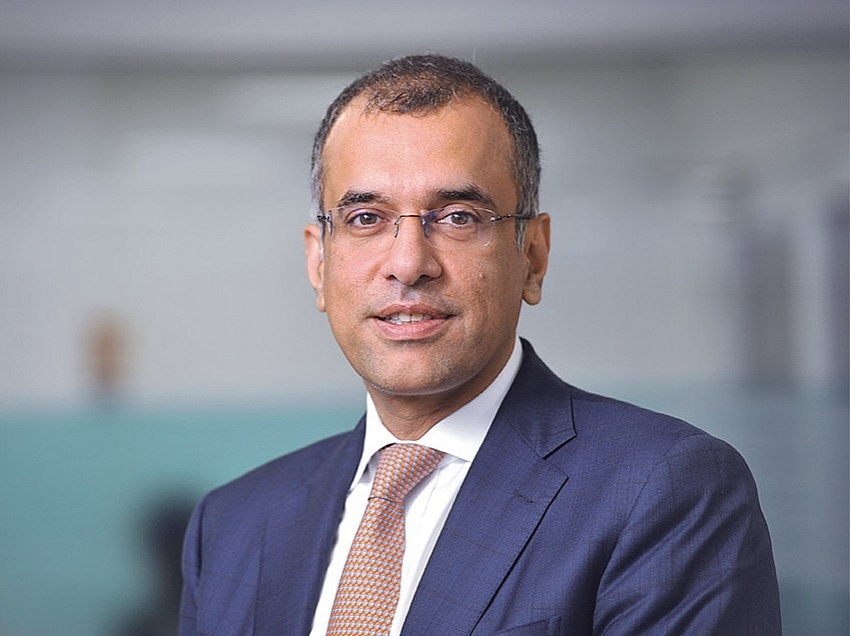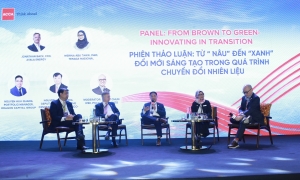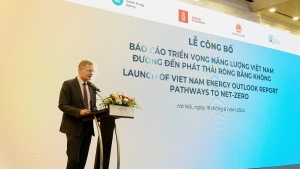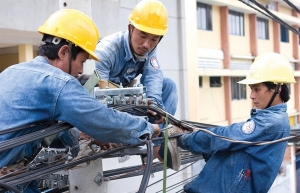Financing the energy transition for Southeast Asia
Electrification is the readily available alternative to the burning of fossil fuels to power our cars, buses, and boilers. The emissions associated with producing that electricity will matter greatly. Southeast Asia’s economic dynamism has analysts projecting the region’s annual energy consumption could triple over the three decades to 2050.
 |
| Surendra Rosha, co-chief executive for Asia-Pacific HSBC |
Renewable energy is now the cleanest and most cost-effective way to meet this relentless demand. By decoupling economic growth from carbon emissions, ASEAN will follow the path established in developed economies like the US, where GDP has more than doubled since 1990 even as emissions have fallen. To be sure, part of that was due to the deprecation of manufacturing in some Western countries, but cleaner energy production mattered most.
For ASEAN to achieve net-zero, the amount of energy generated by renewables must roughly triple by the end of this decade. Bringing these clean power sources onto the grid can deliver the bulk of the deep emissions cuts before 2030. Following this, the maturing of cost-competitive cleaner technologies will enable faster decarbonisation in the ‘hard-to-abate’ sectors, such as steelmaking and aviation.
However, achieving this pace requires collaboration. Financial institutions and private, public, and philanthropic organisations have made tangible progress in recent years to coordinate change. Strengthening these partnerships can help scale renewables, channel capital to where industries need it most, and address the challenge of coal.
There are three reasons for optimism. Firstly, ASEAN enjoys vast potential to deploy solar and wind. However, installing new renewables at multiples of current capacity will demand significant funds. That means rebalancing from the current 50-50 ratio of investment in fossil fuels and low-carbon sources to 3:1 in favour of cleaner sources.
Adding up the net-zero commitments made by financial institutions shows there is plenty of money available to address this. The hold-ups are more operational. In addition to the complex criteria commercial banks must apply in emerging markets, bankable deals and feasible contract structures can be difficult to identify in many countries. Policymakers can help to unblock this through building a pipeline of bankable projects to enable and accelerate the deployment of private capital.
Secondly, policies can scale innovative financing. This means deploying more blended finance which combines public sources, such as multilateral development banks, with private capital from financial institutions.
The financial plumbing to facilitate this remains unfinished. Today, most blended finance contracts are customised from transaction to transaction, and so they are rarely repeatable. Establishing contract templates for wind, solar, and other renewables would provide consistency and comparable projects to help banks evaluate risk.
This is part of the reason why HSBC launched a blended finance vehicle called Pentagreen to support sustainable infrastructure in Southeast Asia, in partnership with Singapore’s Temasek. Last year it closed its first transaction, financing a portfolio of six solar power projects across the island of Luzon in the Philippines.
Thirdly, ASEAN can tackle the coal challenge with collaboration. At present, around 450 coal plant units produce most of Southeast Asia’s energy, with long operating lifespans. Finding ways to retire these coal plants early and replace them with renewables is necessary to meet net-zero targets.
Policymakers can support financial institutions to participate in the early retirement of coal-fired power, as part of a broader plan to build renewables and grid infrastructure. Just Energy Transition Partnerships in Indonesia and Vietnam are promising examples: these multilateral financial agreements bring together G7 countries with financial institutions and national governments, aiming to accelerate coal phase-out as part of a broader energy transition.
Our collective challenge today is to shift from concept to transactions. This is where the hard yards are. Solutions need to be scalable so that the public sector can participate, and the private sector can finance. Credibility and replicability are key, which is only possible through enhanced public-private partnerships.
Coal policies have focused on halting new generation, but they have not yet moved towards a managed phase-out of existing plants. The rapid scaling of renewables shows what is possible when the economics and policy align. Ember, an independent think tank, projects a dramatic turning point this year with global energy emissions falling for the first time.
That progress is thanks to the same sort of innovation that made modern tuk-tuks electric, quiet, and clean. I expect that story to be repeated many times on the long road towards net-zero. Partnership can enable the necessary financing to be available, affordable, and scalable across ASEAN.
 | Renewable energy on the table for Vietnam Vietnam is considered a fertile ground for the renewable energy industry, according to the May 28-29 forum. |
 | Investment in green energy transition vital for Vietnam The Vietnam Energy Outlook Report - Pathways to Net Zero (EOR-NZ) has noted that to achieve its 2050 target, Vietnam's CO2 emissions may peak by 2030, so the pace of its green energy transition needs to pick up. |
 | DPPA paves the way to energy transition Direct power purchasing mechanisms pave the way for manufacturers to accelerate their emission reduction strategies by expanding the procurement of renewable energy. |
What the stars mean:
★ Poor ★ ★ Promising ★★★ Good ★★★★ Very good ★★★★★ Exceptional
Related Contents
Latest News
More News
- Heavy industries set for pilot greenhouse gas quotas (December 25, 2025 | 10:00)
- Swedfund invests in MSME growth and climate action in Vietnam (December 19, 2025 | 11:42)
- GreenYellow brings solar energy to light up remote schools in Tuyen Quang province (December 19, 2025 | 08:00)
- Charge+, Grab partner to develop EV charging network in Vietnam (December 18, 2025 | 17:11)
- Linking sci-tech and innovation to Vietnam’s net-zero future (December 18, 2025 | 14:31)
- Driving double-digit growth through green and circular transformation in Vietnam (December 17, 2025 | 09:00)
- Standard Chartered and ACCA deepen collaboration to develop Vietnam’s talent for a sustainable future (December 15, 2025 | 18:18)
- Schaeffler reports strong early output from Dong Nai solar project (December 12, 2025 | 15:16)
- Forestry conference highlights biodiversity and sustainability goals (December 09, 2025 | 13:35)
- Home Credit honoured among top 10 sustainable companies in trade and services (December 09, 2025 | 12:18)

 Tag:
Tag:



















 Mobile Version
Mobile Version